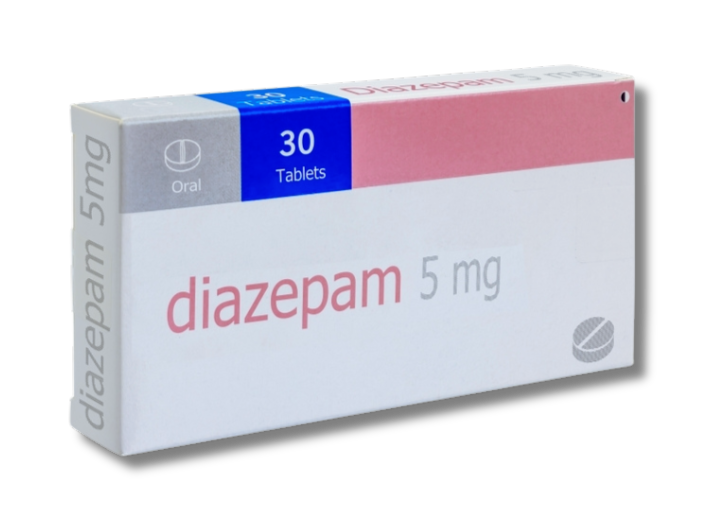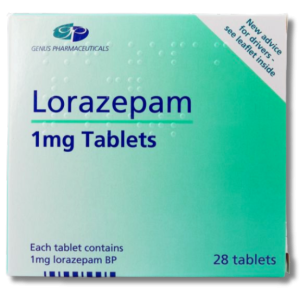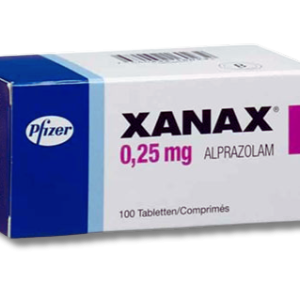Description
Diazepam is a prescription medicine in the benzodiazepine group. Doctors use it to treat anxiety, muscle spasms, seizures, and alcohol withdrawal.
This medicine works by boosting the effect of a calming chemical in the brain. That helps people feel more relaxed.
People might know diazepam by its old brand name, Valium. These days, it’s mostly found as a generic medicine.
It’s important to use diazepam only as your doctor advises. Misusing it can cause drowsiness, addiction, and other side effects.
What Is Diazepam?
Diazepam is a prescription drug for conditions like anxiety, muscle spasms, and seizures. It calms the brain and nerves, making it useful for short-term relief and emergencies.
Benzodiazepine Classification
Diazepam belongs to the benzodiazepine family. These medicines act on the central nervous system and are often prescribed for anxiety, muscle spasms, and seizure control.
Benzodiazepines work fast, producing a calming effect that eases symptoms. In practice, doctors keep their use short-term because of dependence risks.
Most guidelines say not to prescribe diazepam for longer than four weeks. Other benzodiazepines you might hear about include lorazepam, alprazolam, and clonazepam.
This group of medicines is tightly controlled. You can only get them with a prescription, and pharmacists will talk you through side effects and precautions—like avoiding alcohol and not driving if you feel drowsy.
Active Ingredient and Formulations
The active ingredient is diazepam itself. Some people still call it Valium, but that brand isn’t always available in the UK.
Diazepam comes in a few forms to suit different needs:
- Tablets: Swallowed with water, usually for anxiety or muscle spasms.
- Oral liquid: Handy if you can’t swallow tablets.
- Rectal tubes: Used for sudden seizures, especially in kids.
- Injection: Given in hospitals for emergencies like severe seizures or agitation.
Doses and forms vary, so only a doctor or pharmacist can say which is right for you.
How Diazepam Works
Diazepam increases the activity of a brain chemical called GABA. GABA calms nerve activity, which helps ease anxiety or muscle tension.
When GABA’s effects go up, brain signals slow down. This helps control muscle spasms, lowers anxiety, and can stop some seizures.
The calming effect usually kicks in within 10 to 60 minutes, depending on the form and what you’re treating.
Because of these effects, doctors usually keep diazepam use short to avoid dependence. Patients and carers get information leaflets to help them use it safely.
How to buy Diazepam online in the UK
You can buy Diazepam online in the UK, but there are strict rules. Diazepam is prescription-only, so you need a valid prescription.
Start by seeing your GP or a private doctor. They’ll decide if Diazepam is right for you and, if so, give you a prescription.
Licensed UK online pharmacies can fill your order. Make sure the pharmacy is registered with the General Pharmaceutical Council (GPhC).
Most trustworthy online pharmacies will ask for your prescription before sending anything.
Checklist for buying Diazepam online:
- Get a prescription from a registered doctor
- Pick a licensed UK pharmacy (look for GPhC registration)
- Show your prescription when you order
- Check delivery options and prices
Some typical online pharmacy features:
| Service | Description |
|---|---|
| Delivery | Next-day or tracked delivery may be available |
| Dosages | Usually 2mg, 5mg, or 10mg tablets |
| Prescription | Required for every purchase |
| Security | Must meet UK legal and safety standards |
It’s illegal to buy Diazepam online in the UK without a prescription. Medicines from dodgy sources might be unsafe or even fake.
Don’t use unregulated websites. Stick to legal, authorised options to stay safe and follow UK law.
Clinical Uses and Indications
Diazepam is a benzodiazepine with several clear medical uses. It’s often prescribed for anxiety, muscle spasms, seizures, and alcohol withdrawal symptoms.
Anxiety and Panic Disorders
Doctors approve diazepam for short-term treatment of severe anxiety and panic attacks. It works by boosting GABA in the central nervous system, which calms things down.
People with generalised anxiety disorder or sudden panic may get diazepam if symptoms are intense and disabling. It’s not for mild or ongoing anxiety because of dependence risks.
Diazepam can reduce sweating, restlessness, and agitation that come with panic. Prescriptions are usually short—just 2 to 4 weeks—to avoid tolerance or addiction.
Sometimes, doctors use diazepam as a stopgap while waiting for longer-acting medicines, like SSRIs, to kick in.
Key points:
- Fast relief for severe anxiety
- Used while waiting for other medicines to work
- Short-term only to cut addiction risk
Muscle Spasms and Spasticity
Diazepam helps with muscle spasms from things like back injuries, cerebral palsy, or multiple sclerosis. It relaxes muscles by increasing GABA activity in nerve cells.
This can ease pain, stiffness, or trouble moving caused by spasms. After an injury, doctors might use diazepam for a few days to help with recovery.
For chronic spastic conditions, like those from central nervous system diseases, diazepam can improve movement and comfort. Doses depend on age, weight, and how bad the symptoms are.
Typical uses include:
- Muscle injury with spasms
- Chronic spasticity from neurological disorders
Seizures and Fits
Diazepam is a go-to for certain seizures, especially when a quick fix is needed. It’s often used to stop long seizures, like status epilepticus, or clusters of seizures.
It comes in forms like tablets and rectal solutions to suit different situations and ages. In emergencies, rectal diazepam can stop seizures in adults and kids who can’t take oral meds.
The effect usually starts in about ten minutes. For ongoing epilepsy, diazepam might be a backup for breakthrough fits when other medicines aren’t enough.
Key features:
- Stops seizures quickly
- Can be used at home (rectal form)
- Works in acute medical settings
Alcohol Withdrawal Symptoms
Diazepam is important for managing sudden alcohol withdrawal. It helps with anxiety, agitation, sweating, tremors, and lowers the risk of seizures.
Alcohol withdrawal can make the nervous system overactive. Diazepam calms things down by making you feel more relaxed and less shaky.
Doctors usually use it in hospitals or under supervision, adjusting doses based on symptoms and liver health. They taper the dose down to avoid withdrawal from diazepam itself.
Guidelines recommend diazepam for withdrawal symptoms and preventing seizures, especially during the first few days of detox.
Important effects:
- Calms anxiety and agitation during withdrawal
- Reduces sweating and tremors
- Prevents seizures and serious complications
Dosage and Administration
Diazepam’s active ingredient helps with anxiety, muscle spasms, and seizures. The dose depends on your age, what you’re treating, and how you take it.
Diazepam 5mg and Other Strengths
Diazepam comes in 2mg, 5mg, and 10mg tablets. Adults often get the 5mg tablet.
For anxiety, adults usually start at 2mg three times daily, and the dose can go up to 10mg three or four times a day if needed. Doctors aim for the lowest effective dose.
Elderly people and kids start much lower, maybe 1–2.5mg once or twice a day. People with liver problems also need smaller doses. Doses go up or down based on how you respond and tolerate the medicine.
Table: Example Diazepam Tablet Doses
| Age Group | Starting Dose | Usual Maximum Dose |
|---|---|---|
| Adult | 2–5mg, 2–3x daily | Up to 10mg, 3–4x daily |
| Elderly | 1–2.5mg, 1–2x daily | Use lowest possible |
| Children (6m+) | 1–2.5mg, 3–4x daily | Use lowest possible |
Routes of Administration
You can take diazepam by mouth, IV, IM, or rectally. The choice depends on your situation and what you need.
Oral tablets are most common for regular anxiety, muscle spasms, or mild seizures. For emergencies like severe seizures or agitation, doctors use IV or rectal forms for fast action.
Rectal diazepam, often in pre-filled tubes, is mainly for stopping seizures, especially in kids with epilepsy emergencies.
IV diazepam should go in slowly, at least one minute per 5mg, because of breathing risks. IM is less common but used if IV isn’t an option.
Key Considerations for Prescribing
Doctors need to check for allergies, other medicines, and health issues before prescribing diazepam. They should always start at the lowest dose and only increase if necessary.
Long-term use raises the risk of dependence, especially at higher doses. Older adults face higher risks of falls and confusion.
Doctors avoid or use diazepam very cautiously in people with breathing issues, liver problems, or a history of substance misuse. Patients should get a leaflet explaining how to take the medicine and what side effects to watch for.
Regular check-ins help make sure you still need the medicine and it’s working for you.
Safety, Side Effects, and Monitoring
Diazepam, like other benzodiazepines, can cause side effects and needs careful use. Patients should know about possible risks, the chance of dependence, breathing issues, and why it’s important to report any problems.
Common Side Effects
The most common side effect of diazepam is drowsiness. This can affect daily activities and bump up the risk of falls, especially if you’re older.
Other frequent side effects show up as tiredness or muscle weakness. Some folks also notice poor coordination, or even blurred vision and confusion.
Headaches, dizziness, nausea, indigestion, or sweating can happen, but they’re less common. Rarely, skin rashes or mood changes—like agitation or hallucinations—pop up.
Usually, these effects are mild. Still, if something feels off, it’s smart to mention it to your doctor.
Table: Frequent Side Effects of Diazepam
| Side Effect | Frequency |
|---|---|
| Drowsiness | Very common |
| Muscle weakness | Common |
| Fatigue | Common |
| Sweating | Less common |
| Confusion | Occasional |
| Skin rash | Rare |
Try to avoid driving or using machinery until you know how diazepam hits you. Alcohol just makes these side effects worse, so it’s best to steer clear while on this medicine.
Risk of Dependence and Withdrawal
Diazepam and other benzodiazepines can cause dependence, even with proper use. The risk goes up if you take it for more than 4 weeks or at higher doses.
If you stop diazepam suddenly, withdrawal symptoms can kick in. These might look like anxiety, irritability, trouble sleeping, sweating, stomach cramps, or, in tough cases, seizures.
A doctor should help manage withdrawal, usually by tapering the dose slowly. If you’ve struggled with alcohol or drug misuse before, you’re at higher risk of becoming dependent on diazepam.
Only use it long-term if your healthcare provider says it’s necessary.
Signs of withdrawal include:
- Increased anxiety
- Sweating and shaking
- Difficulty sleeping
- Muscle pain
- Irritability
Don’t quit suddenly—it’s risky and can cause severe reactions.
Breathing Problems and Contraindications
Diazepam can slow your breathing, especially if you mix it with other medicines that relax the body, like opioids or alcohol. This combo raises the risk of serious breathing problems or even death, especially if you’re older or have lung issues.
People with certain medical problems—like severe breathing difficulties (think chronic obstructive pulmonary disease), severe liver disease, or myasthenia gravis—shouldn’t take diazepam. Pregnant women, especially in the first and third trimesters, should avoid it unless there’s absolutely no other option, since it could harm the baby.
Important contraindications:
- Severe respiratory insufficiency
- Sleep apnoea syndrome
- Severe liver impairment
- Hypersensitivity to benzodiazepines
If you notice shortness of breath, slow breathing, or bluish lips or skin, get medical help right away.
Reporting Adverse Reactions
Patients should report all side effects when taking diazepam, whether they’re expected or not. Sharing this info helps track medicine safety and can make care better for everyone.
In the UK, you can use the Yellow Card Scheme to report adverse reactions. It’s available online or through the Yellow Card app.
Make sure to include any unusual or severe reactions, like skin rashes, breathing trouble, or allergy symptoms.
Ways to report include:
- Contacting a GP, pharmacist, or nurse
- Reporting online at https://yellowcard.mhra.gov.uk/
- Using the Yellow Card app
All reports stay confidential. Reporting quickly means better information for future patients.
Frequently Asked Questions
Diazepam is a widely prescribed medicine with several approved uses. Getting the dose right and knowing the risks really matter for safety and good results.
What are the primary indications for prescribing this medication?
Doctors prescribe diazepam for anxiety disorders and symptoms of acute alcohol withdrawal.
It also helps manage muscle spasms, certain seizures, and can calm patients before surgery. Sometimes, it’s used for short-term relief of severe insomnia if other options haven’t worked.
What adverse reactions may be expected with its usage?
Common side effects? Drowsiness, dizziness, fatigue, and muscle weakness come up a lot.
Some people get confusion, blurred vision, or trouble with coordination. Serious risks include slowed breathing, dependence, or allergic reactions—especially if mixed with other depressants.
How should dosages be determined for different patient groups?
Dosing depends on age, health, and why you’re taking it. Adults usually start with a standard dose.
Elderly folks and kids should get lower doses to cut down on side effects. If you have liver or kidney problems, close medical supervision is a must.
What specific considerations are there for intravenous administration?
Give intravenous diazepam slowly to avoid problems like breathing trouble or low blood pressure.
Best to do this in a hospital, with trained staff and proper monitoring gear. Since it acts fast and can cause serious side effects, careful observation is key.
Under which brand names is this medication commonly marketed?
The most famous brand for diazepam is Valium. Other brands and generics show up, depending on where you live.
How does the medication exert its therapeutic effects on the body?
Diazepam boosts the effects of gamma-aminobutyric acid (GABA), a natural brain chemical that calms things down.
When GABA works better, it helps reduce anxiety and relax muscles.
It can also stop spasms and create a sedative effect.
So, the medication eases anxiety, prevents seizures, and helps relax the body before certain medical procedures.



Reviews
There are no reviews yet.